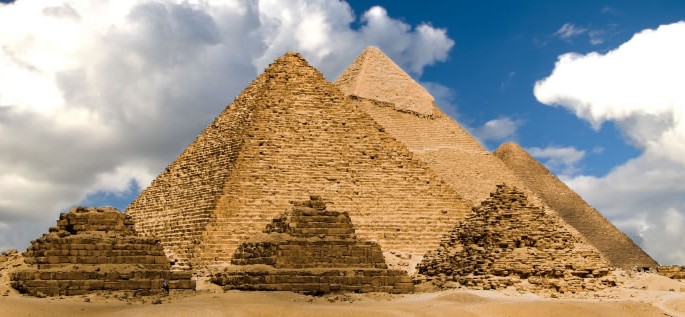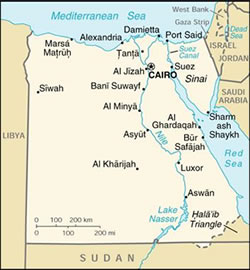
Arabic (Egyptian Spoken)
Egyptian Arabic, also known as Egyptian Spoken Arabic, Masri, Massry, Normal Egyptian Arabic and Egyptian Colloquial Arabic, is a variety of Arabic which belongs to the Semitic branch of the Afro-Asiatic language family. It is spoken by 56,400,000 people in Egypt (Ethnologue). It also serves as a second language in many other countries of the Middle East, e.g., in Iraq, Israel, Jordan, Kuwait, Libya, Saudi Arabia, United Arab Emirates, and Yemen (Ethnologue). The total number of speakers of Egyptian Spoken Arabic is estimated to be upwards of 54 million (Ethnologue).
Prior to the Arab conquest of Egypt in the 7th century AD, the Egyptians spoke Coptic, a later phase of ancient Egyptian. Following the Arab conquest, there was a prolonged period of time when both Coptic and Arabic were spoken in Egypt. Egyptian Spoken Arabic, as distinct from Classical Arabic and the variety spoken by the Arab invaders, is thought to have developed in the first Islamic capital of Egypt, that is now part of Cairo, the capital of present-day Egypt. With increased influence of Islam and arabization of the country, Egyptian Spoken Arabic slowly replaced Coptic. However, there is evidence that Coptic continued to be spoken until the 17th century AD. Although Coptic today has no known first-language speakers, it continues to serve as the liturgical language of the Egyptian Coptic Church.
Status
Egyptian Spoken Arabic is the language of wider communication and de facto national language of Egypt, although the official language of Egypt is Modern Standard Arabic (MSA). Egyptian Spoken Arabic is used in literature, including novels, plays, and poems, and in popular media such as in comics, advertising, some newspapers, and in transcriptions of popular songs. MSA is used in most other written media and in TV broadcasts. MSA is spoken on all formal occasions and for all formal purposes.
Egyptian Spoken Arabic is widely understood throughout the Arab world because Egypt has been a dominant force in film and in the media. Egypt developed the first Arab-speaking local film industry, and Egyptian films are widely distributed throughout the Arab world. The Egyptian film industry has created over 3,000 full-length films since 1924 and has earned the name of “Hollywood on the Nile.” As a result, Egyptian Spoken Arabic is usually chosen as the spoken dialect taught to students of Arabic as a foreign language.
Dialects
There are several dialects of Egyptian Arabic that are traditionally divided into two major dialect groups.
- Lower Egyptian (Northern). Cairene Arabic, the prestige dialect spoken in Cairo, is a Lower Egyptian dialect.
- Upper Egyptian (Southern, also called Sa`idi) enjoys relatively little prestige, although it is widely spoken.
According to Ethnologue, speakers of Cairene Arabic do not understand speakers of Sa`idi, but speakers of Sa`idi understand speakers of Cairene Arabic. This type of non-reciprocal intelligibility frequently occurs between urban (high prestige) speakers and rural (low prestige) speakers.
Structure
Sound system
Vowels
Egyptian Spoken Arabic has more vowels than Modern Standard Arabic. It has four short and six long vowels, as compared to three short and three long vowels in MSA. The table below shows the vowel phonemes of Egyptian Spoken Arabic (from Wikipedia).
| Close |
i, i:
|
u:
|
| Close-mid |
e, e:
|
o
|
| Mid |
æ, æ:
|
|
| Open |
ɑ, ɑ:
|
Some of the other features of Egyptian Spoken Arabic vowels include the following:
-
- All long vowels become shortened in unstressed positions and before consonant clusters.
- Short /i/ and /u/ are often dropped when another vowel is added to a word, e.g., kaatib, ‘having written’ (masculine) becomes katba, ‘having written’ (feminine).
- MSA diphthongs /ay/ and /aw/ have become long vowels in Egyptian Arabic.
Consonants
The inventory of consonant phonemes of Egyptian Spoken Arabic is similar to that of MSA, but there are some differences. The table below shows the consonant phonemes of Egyptian Spoken Arabic (based on Wikipedia).
|
x
|
Palato-alveolar | ||||||||||
|---|---|---|---|---|---|---|---|---|---|---|---|
| Plain | Emphatic | Plain | Emphatic | ||||||||
| voiceless |
(p)
|
t
|
tˤ
|
xx |
k
|
q
|
ʔ
|
||||
| voiced |
(bˤ)
|
d
|
dˤ
|
g
|
|||||||
| voiceless |
f
|
s
|
sˤ
|
ʃ
|
x
|
ħ
|
h
|
||||
| voiced |
(v)
|
z
|
zˤ
|
(ʒ)
|
ɣ
|
ʕ
|
|||||
| Affricates | x | x | x | ||||||||
|
m
|
(mˤ)
|
n
|
x | x | |||||||
|
l
|
x | ||||||||||
| Tap or trill |
ɾ~r
|
ɾˤ~rˤ
|
x | xx | x | ||||||
|
w
|
j
|
x | |||||||||
-
- (p), (v), (ʒ) occur mostly in loanwords
- (bˤ), (mˤ) have marginal status
- /tˤ, dˤ, sˤ, zˤ, rˤ, ɾˤ, ɾˤ/ are pharyngealized consonants that have no equivalents in English. Not all speakers of Egyptian Arabic can pronounce these consonants.
- /ʔ/ = sound between the vowels in uh-oh.
- /ʃ/ = sh in sheep
- /ʒ/ = s in vision
- /q, χ, ʁ, ħ, ʕ/ have no equivalents in English.
Stress
Egyptian Arabic has five syllable types: CV, CV:, CVC, CV:C,and CVCC (where C = consonant, V = short vowel, V: = long vowel). CV:, CV:C, and CVCC are long, or heavy, syllables. Going from right to left in a word, stress falls on the first encountered CV:, CV:C, or CVCC syllable.
Grammar
There are some differences between MSA and Egyptian Spoken Arabic.
Noun phrase
- Unlike MSA, nouns in Egyptian Arabic are not inflected for case.
- Nouns have both direct and indirect object clitics that follow direct object clitics and precede the negative marker –s.
- There is no dual number.
- The plural is usually formed by adding a suffix to the end of a word. In some instances, the plural is expressed by changing the vowel structure of a word. There are many patterns of broken plurals that depend on the structure of the root.
- Object pronouns are attached as clitics to the end of a nouns, verbs or prepositions, e.g., béet ‘house’, béet-i ‘my house’.
Verb phrase
Some of the most salient features of Egyptian Spoken Arabic verbs are listed below. Most of them are shared with other Arabic varieties.
- Person, mood, and aspect are marked by prefixes and suffixes.
- There is one basic stem plus a number of derived stems, each of which has a range of meanings, such as reflexivity, and causativity. Each form has its own set of active and passive participles and verbal nouns.
- There is a perfective suffixed conjugation and an imperfective prefixed conjugation. The perfective can refer to present, pluperfect, or future. The imperfective can refer to present, past, or future. Colloquial Egyptian Arabic has also developed a future tense marker ħa-, e.g., ħayiktib, ‘he will write‘.
- The imperfective can be used as an infinitive, e.g., biyħibb, ‘he likes to write’.
- The imperative is formed by taking the prefix off the imperfective verb.
- There is a double negation, similar to French. Verbs are negated by using the particles ma– and –s.
Word order
The usual word order in Egyptian Spoken Arabic is Subject-Verb-Object. The demonstratives this and that follow the nouns they modify. Wh– question words are not moved to the front of the sentence as in MSA, e.g., ráħ maṣri ʔimta? literally, ‘He went why?’
Vocabulary
Like other varieties of Arabic, Egyptian Arabic derives most of its vocabulary by applying various vowel insertion patterns and templates to consonant roots. Watch the explanation of this process:
Egyptian Arabic tends to be more open to borrowing words from other languages than MSA. Throughout history, it has borrowed words from diverse sources. Earlier borrowings came from Coptic, the dominant language of Egypt prior to the arrival of the Arabs. These loan words dealt primarily with rural matters such as agriculture and traditional trades. A few Coptic expressions have survived in modern Egyptian Arabic. Later loanwords came from Greek, Italian, French, and English. At present, the primary source of borrowing is English. Watch the video below to hear some basic words and phrases.
Writing
Egyptian Arabic is rarely written, since Modern Standard Arabic is normally used for written communication. However, Egyptian Arabic is occasionally used for writing novels, plays, poems as well as comics, captions in cartoons, transcriptions of spoken language, advertising, and in some newspapers. MSA is used In most other written media and in TV news reporting. Egyptian Arabic is normally written in the Arabic alphabet. It is also increasingly written with the Latin alphabet.
Basic resources
Egyptian Arabic (Wikipedia)
Egyptian Spoken Arabic (Ethnologue)
OLAC Resources in and about Egyptian Arabic
Difficulty
Language Difficulty
 How difficult is it to learn Arabic?
How difficult is it to learn Arabic?Arabic is considered to be a Category III language in terms of difficulty for speakers of English.
